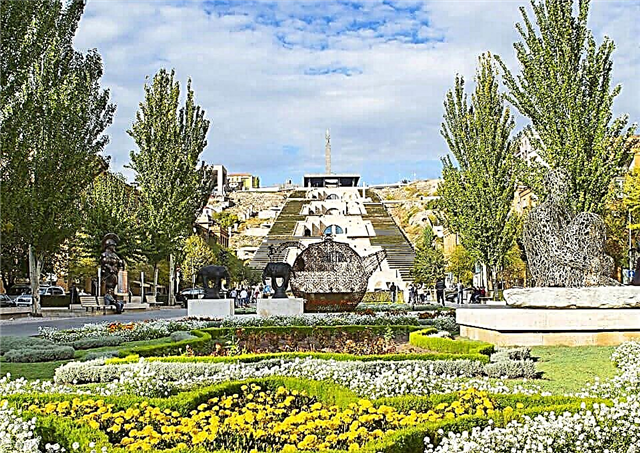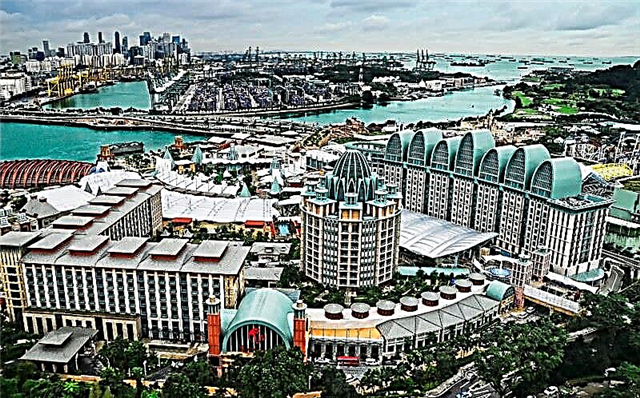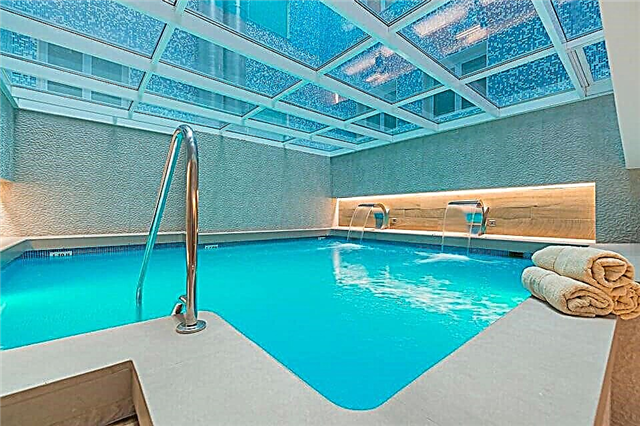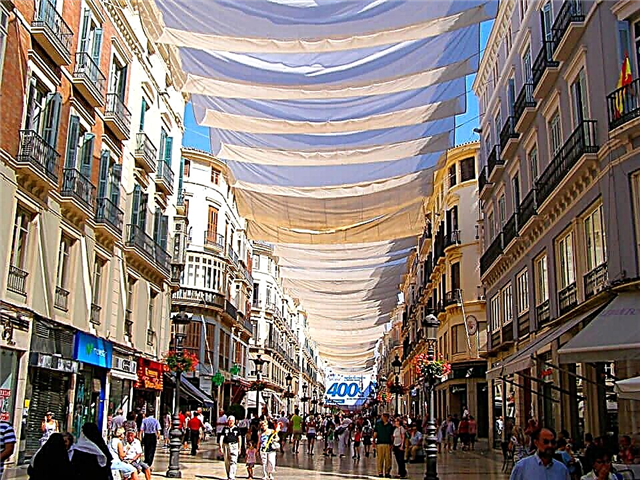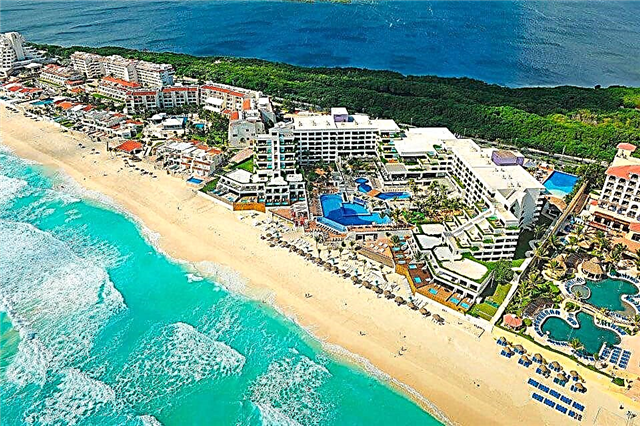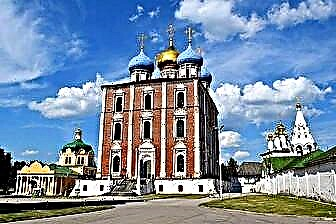Ryazan is one of the oldest cities in Central Russia. It is believed that a populous settlement has existed here since the XII century, and the first stone churches appeared in the XIV-XV centuries. The Ryazan Kremlin is an ancient fortress and one of the main attractions of the city is an open-air museum with ancient temples and a princely court.
No less interesting are the picturesque estate museums of the famous natives of the Ryazan land: the poet S. A. Yesenin and academician I. P. Pavlov. Also, tourists will definitely like the magnificent Gothic building of the stud farm and the fabulous estate of the von Derviz family, as if transferred to the Ryazan region from the expanses of Austria-Hungary. Particularly noteworthy are the Museum of the History of the Airborne Forces and the city art gallery, where unknown masterpieces of famous Russian artists are kept.

The best hotels and hotels at affordable prices.
from 500 rubles / day
What to see and where to go in Ryazan?
The most interesting and beautiful places for walking. Photos and a short description.
Ryazan Kremlin
Museum-reserve, located on the territory of the former fortress between the rivers Lybid and Trubezh. It is one of the oldest in Russia, since it was organized in 1884. The construction of stone fortifications in Pereyaslavl-Ryazan (modern Ryazan) began in the 15th century. Around the same time, the Assumption and Nativity of Christ Cathedrals appeared. Once upon a time there were three monasteries on the territory of the Kremlin. The main buildings were erected in the 17th century and have survived to this day.

Assumption Cathedral
The temple was built at the end of the 17th century according to the project of the then famous architect Y. G. Bukhvostov in the Naryshkin Baroque style. Today, experts consider the building to be one of the most significant examples of this style. Inside there is a magnificent 27-meter iconostasis, consisting of 7 tiers and decorated with skillful stone carvings - a real masterpiece of decorative art.

Nativity of Christ Cathedral
Ryazan Cathedral, the first stone building on the territory of the Kremlin. It is believed that it began to be erected in the XIV century under Oleg Ryazansky. The temple was rebuilt several times, since starting from 1522 each bishop strove to add something of his own to its architectural appearance. The building of the 19th century in the classical style has survived to this day. Several princes are buried inside. The cathedral was visited by many Russian emperors.

Spaso-Preobrazhensky monastery
Male monastery of the XIII (XIV) century, founded under Prince Oleg Ryazansky. Until the middle of the 17th century, all the buildings of the monastery were wooden, only in 1640 the first stone church was built. In 1647, a devastating fire destroyed almost the entire complex. The monastery did not function during the Soviet period. Only in 1996 was it returned to the Russian Orthodox Church. Monastic life was fully resumed here in 2005.

Oleg's palace
An architectural monument of the 17th-19th centuries, located on the territory of the Ryazan Kremlin. Until the 16th century, it housed a princely court with bishops' chambers. The building is made of stone and has three floors, where cells, living quarters, utility rooms, house churches were previously located. Today, the building is completely occupied by expositions, where the collections of the museum-reserve are exhibited.

Glebov Bridge and Cathedral Bell Tower
The 15th century Glebov Bridge connects the Ryazan Kremlin with the Cathedral Park. In the past, it performed defensive functions, and during a siege it rose above the moat so that the enemy could not penetrate the fortress. The cathedral bell tower was erected in several stages in 1797-1840 according to the designs of various architects. The building is over 80 meters high, making it one of the largest in Russia. The tower was built in a strict classical style.

Cathedral Square
The square is located in the historical center of Ryazan. Previously it was called Ilyinskaya and Sovetskaya. In the 18th century, according to the new building plan, it was decided to make it the administrative center of the city. The architectural ensemble includes the former building of the provincial chancellery, a youth theater located in a 19th century building, a park and a monument to Prince Oleg Ryazansky, established in 2007. The statue was created by the famous sculptor Zurab Tsereteli.

Cathedral park
City square next to the Kremlin, where residents of the city like to stroll in the shade of trees. This place is an independent attraction, as there are several interesting historical sites: the Transfiguration Church of the Savior on the Yar, Ilyinsky Cathedral, the monument to S. Yesenin, the chapel of the 900th anniversary of Ryazan and a couple of obelisks. The main alley of the park begins at the picturesque stone rotunda.

Church of the Savior on Yar
The Church of the Savior on Yar is one of the oldest in the city - the first information about it dates back to 1626. In architectural terms, the building is a five-domed church. After the Revolution of 1917, it was ravaged and closed, later the building housed the DOSAAF school. The restoration began in 1955. Today, the temple adorns the territory of the Cathedral Park; services are regularly held in it.

Monument to Sergei Yesenin
An unusual sculpture depicting the famous poet was created by A. Kibalchikov in the 1970s. It was installed in Cathedral Park on the day of the lyricist's 80th birthday. The opening of the monument was attended by Yesenin's relatives - his sisters and son. The statue is a bust of the poet with his arms outstretched to the sides, as if preparing to recite poetry in front of a large audience.

Monument to Evpatiy Kolovrat
Evpatiy Kolovrat is a hero and hero who, with a retinue of 1,700 warriors, moved towards the countless hordes of Batu, and died in battle, covering himself with glory. The monument in his honor was created by the sculptor O. Sedov and installed in 2007. Evpatiy Kolovrat is depicted sitting on a reared horse, at any moment ready to rush towards the enemy. The composition is mounted on a granite pedestal.

Sculpture "Mushrooms with eyes"
City sculpture dedicated to the famous Ryazan proverb about mushrooms that have eyes. Allegedly, because of this, it is difficult to collect them in the surrounding forests - they constantly hide and warn their relatives about the approaching lovers of quiet hunting. The art object depicts a whole family: a father mushroom and his two sons, surrounded by forest dwellers. It was installed in 2013 on the territory of the Lower Garden.

Museum of the History of the Airborne Forces
Since 1918, there has been an Airborne Forces school in Ryazan, where fighters are being successfully trained in our time. The museum was opened thanks to the idea of V.F.Margelov, general of the army and commander of the Airborne Forces in the 1950s. The exposition was launched in 1972. The collection is located in the building of the school. It consists of exhibits that tell about the origin, formation and development of the airborne troops.

Art Museum named after I. Pozhalostin
Initially, the collection was dedicated to the work of the engraver I. Pozhalostin and consisted of his numerous works. Over time, the museum's funds expanded to several thousand copies, which included works by Russian and Western European painters of the 15th-20th centuries. Little-known paintings by Shishkin, Repin, Surikov, Vrubel, Korovin are exhibited here, which makes the collection unique and valuable.

Ryazan Regional Drama Theater
The stage was founded in 1787 with the direct participation of G.R.Derzhavin, a statesman and poet of the Enlightenment. It is one of the oldest provincial theaters in Russia. The modern building was built in 1862 according to the design of N. I. Voronikhin in the style of classicism. The repertoire is based on classical works by Russian and foreign playwrights.

Museum-estate of academician I.P. Pavlova
One of the most famous and "promoted" attractions of Ryazan, located in the city center. The complex consists of picturesque wooden buildings, among which is a two-storey house of the early XX century, where Academician I. Pavlov lived, known for his experiments in the study of unconditioned reflexes. Inside, the lush interior of the scientist's family has been recreated and personal belongings are kept.

Summer Club of the Nobility Assembly
A wooden manor house from the beginning of the 20th century, decorated with skillful carvings and skillfully executed window frames. Before the 1917 Revolution, the local aristocracy gathered here to chat over tea, discuss current events, or simply relax on pleasant summer evenings. Nowadays, a center of folk art is located on the territory of the mansion.

Museum-reserve of S. Yesenin in Konstantinovo
The museum complex, opened in 1965 on the territory of the village. Konstantinovo is the homeland of S. Yesenin. The central building is the wooden house of the poet's parents, where personal belongings and old photographs of the family are kept. In the 1980s, a whole ensemble of museum buildings was formed in Konstantinovo, which included the estate of L. I. Kashina with an adjacent park, the building of a rural school, the Church of the Kazan Icon of the Mother of God and other objects.

Starozhilovsky stud farm
The plant was built by Baron von Derwiesz in the 1890s. There were times when about 3 thousand horses were kept here: Arabian horses, representatives of the Oryol breed, draft animals. Unfortunately, during the Second World War, during the evacuation through the Oka, all the livestock died, but the plant was revived anyway, since after the war there was an acute shortage of horses. Of particular interest is the Gothic-style factory building.

The von Derviz estate in Kiritsy
The fabulous estate of the von Dervies family (a noble family of German origin) is perhaps one of the most interesting places in the Ryazan region. The architecture of this building is more typical for the vastness of Central Europe than for central Russia. Locals even dubbed the unusual mansion "Cinderella's Palace". The complex was built at the end of the 19th century. It has survived to this day in a satisfactory condition, as it has been repeatedly restored.



